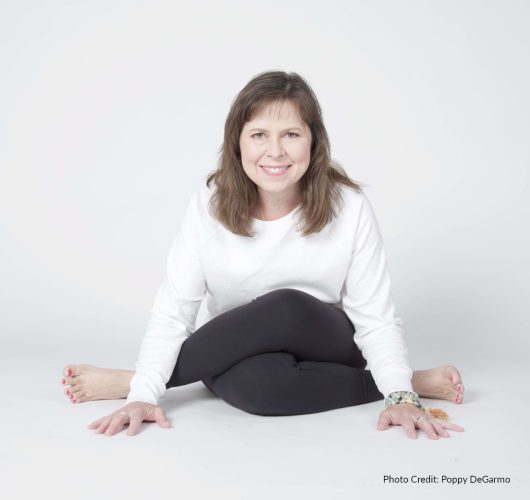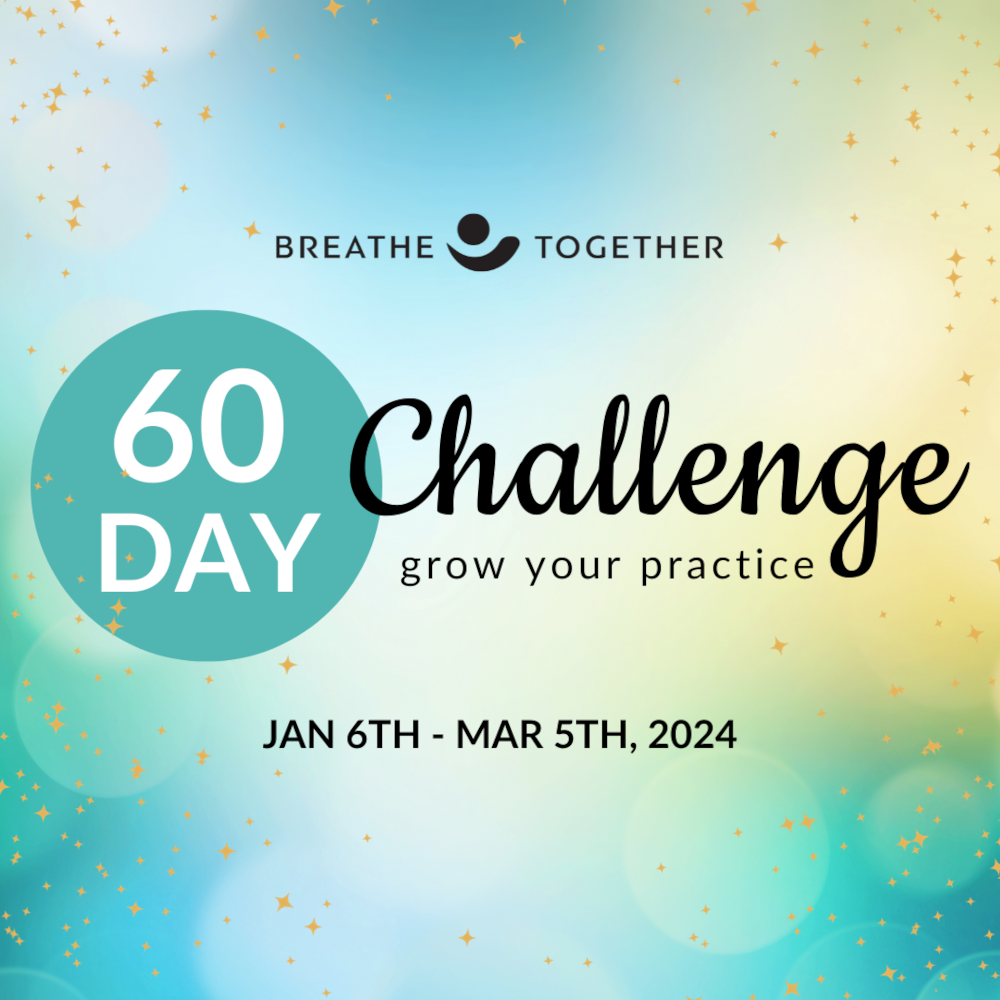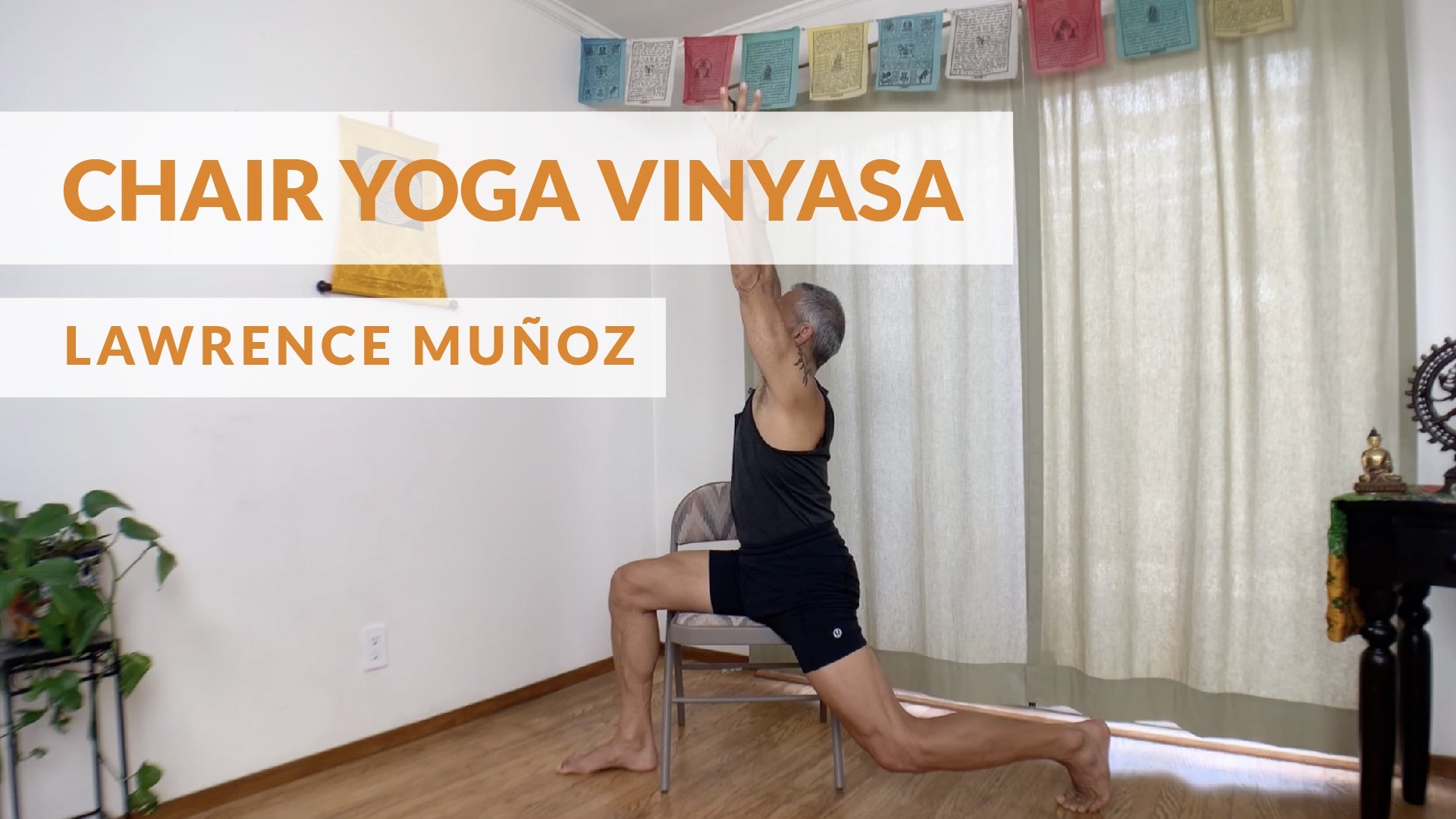Doing therapeutic or restorative poses offer so many benefits and can easily be added into your daily routine. Allowing for 10 minutes a day to do one pose can offer a shot of energy that’s better than sugar or a cup of coffee. These mindful relaxation postures offer support to the joints and tissues, as well as settle the nervous system, giving the body just what it needs to refuel, heal, rest, and recover. Try them individually, or put a few postures together to enhance the benefits.
1. Heart Opener
A great restorative posture for your end-of-summer practice is a heart opener. Heart openers allow excess heat to move out of the body, balancing the pitta dosha, and promoting relaxation. These poses allow us to improve and balance the digestive fire, while expanding the heart area, both emotionally and physically. When our heart is open, we relate to ourselves and others in a healthier and more responsive manner. From a physical perspective, when we open our hearts and lungs, we create expansiveness and spaciousness for better air flow, inviting more oxygen into the entire body.

2. Restorative Twist
A restorative twist is the perfect posture to bring into your fall sequence. Twists help calm the nervous system, improve digestion, create space in spine and ribs, as well as free up stagnation in the abdomen. This is particularly useful during the beginning of cold and flu season to encourage blood flow to our organs and provide support to our immune system.

3. Legs Up the Wall
A gentle inversion is a great way to slow the body down. This restorative posture can be done with the legs up the wall, on a chair, or extended with pelvis support, as seen here. In addition to promoting relaxation, inverting facilitates venous drainage and increases circulation, soothes swollen or cramped feet and legs, stretches the hamstrings and lower back, and can relieve lower back pain for some. It’s especially beneficial to do after traveling or sitting for long periods of time. Although you can do it anytime, anyplace, and anywhere, doing inversions before bedtime can help facilitate a deep and peaceful sleep.
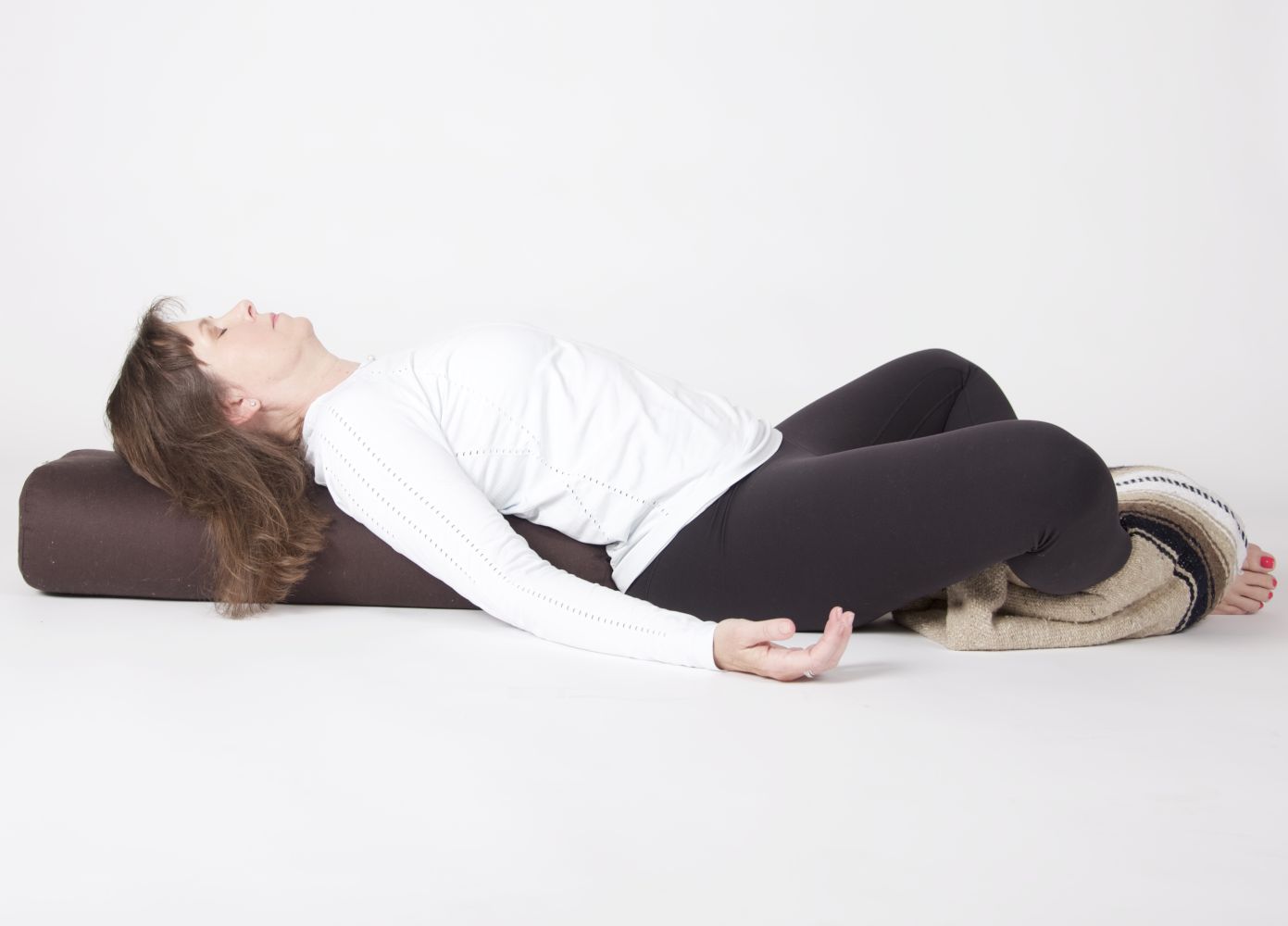
4. Supta Baddha Konasana
Supta baddha konasana, also known as “reclined butterfly pose,” is a great way to open the hips and knees because many of us hold a lot of tension patterns in these areas. When the hips are tight, it also affects the back, which can impact the kidneys. This posture is a fan favorite because it can help stimulate the kidneys and the heart, as well as improve circulation. Other benefits include stress reduction and nervous-system regulation.
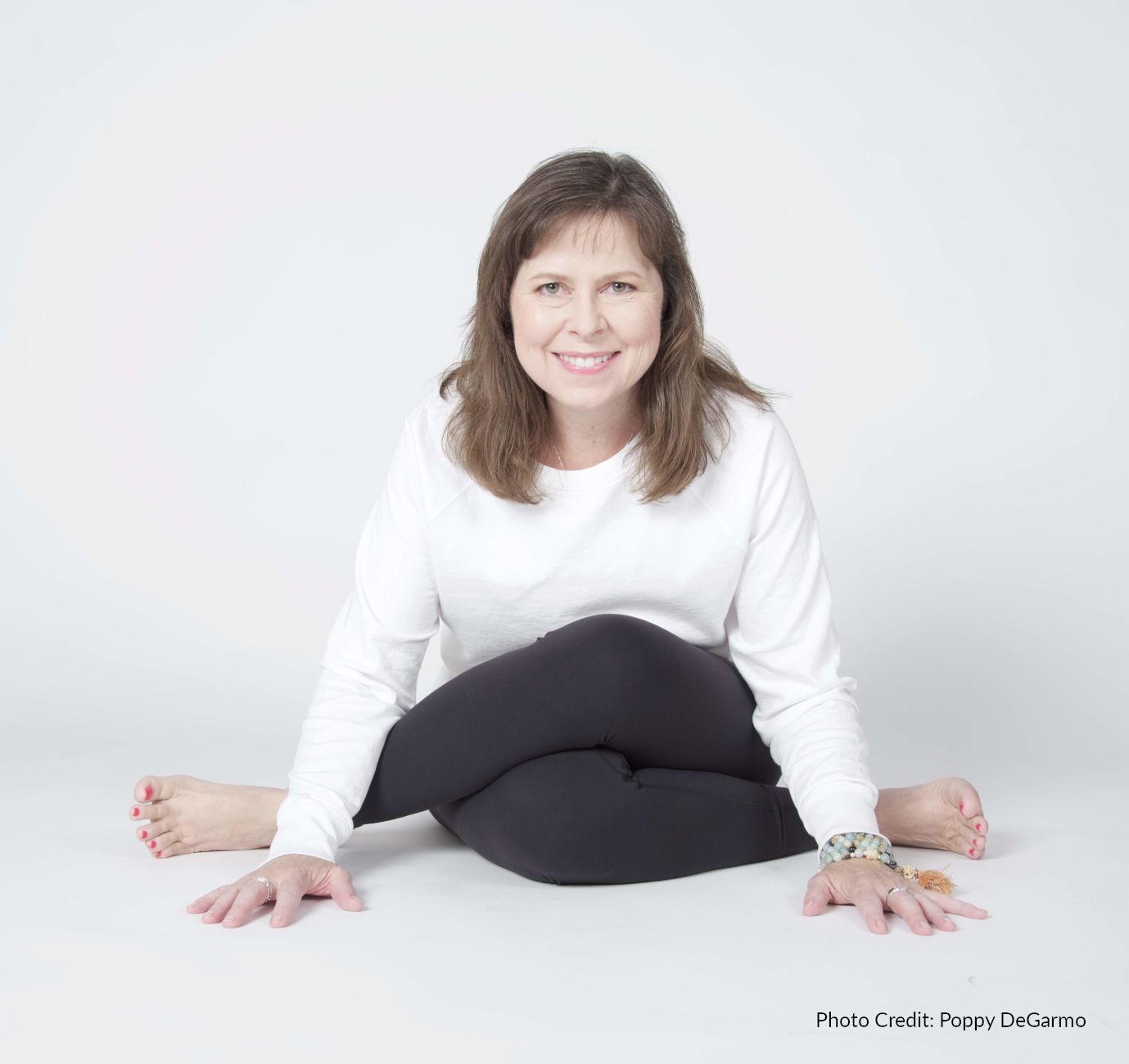
5. Gomukhasana
At first glance, this posture doesn’t look like it’s doing much, but there’s a lot more happening than simply opening the hips. Gomukhasana, or “cow-face pose,” benefits digestion, and when you add the forward fold, it can release the upper back, lengthening and offering release to the lumbar spine. We typically feel the sensation in the hips, so if we’re not careful, we can put stress on the back that we don’t necessarily feel. If one finds themselves rounding in the back, then simply allow the back to rest in a rounding position and place some support (such as a blanket) under the hips. If the back and hips are more open, and one can hinge at the hips, the forward fold becomes more active and leading with the heart may be appropriate. If uncertain, be gentle with yourself!

6. Side-Lying Pose
Side-lying pose is one of the best postures available for soothing the nervous system. With the knees bent and the top leg supported with a blanket or bolster, this allows the psoas muscles to take a break. The psoas muscles are our “fight or flight” muscles, so, when engaged, the nervous system can become more aroused. Supporting the head allows the cervical spine to be in a neutral position, which also helps the nervous system settle down. This is a beautiful way to end a yoga practice or settle down after a stressful day.
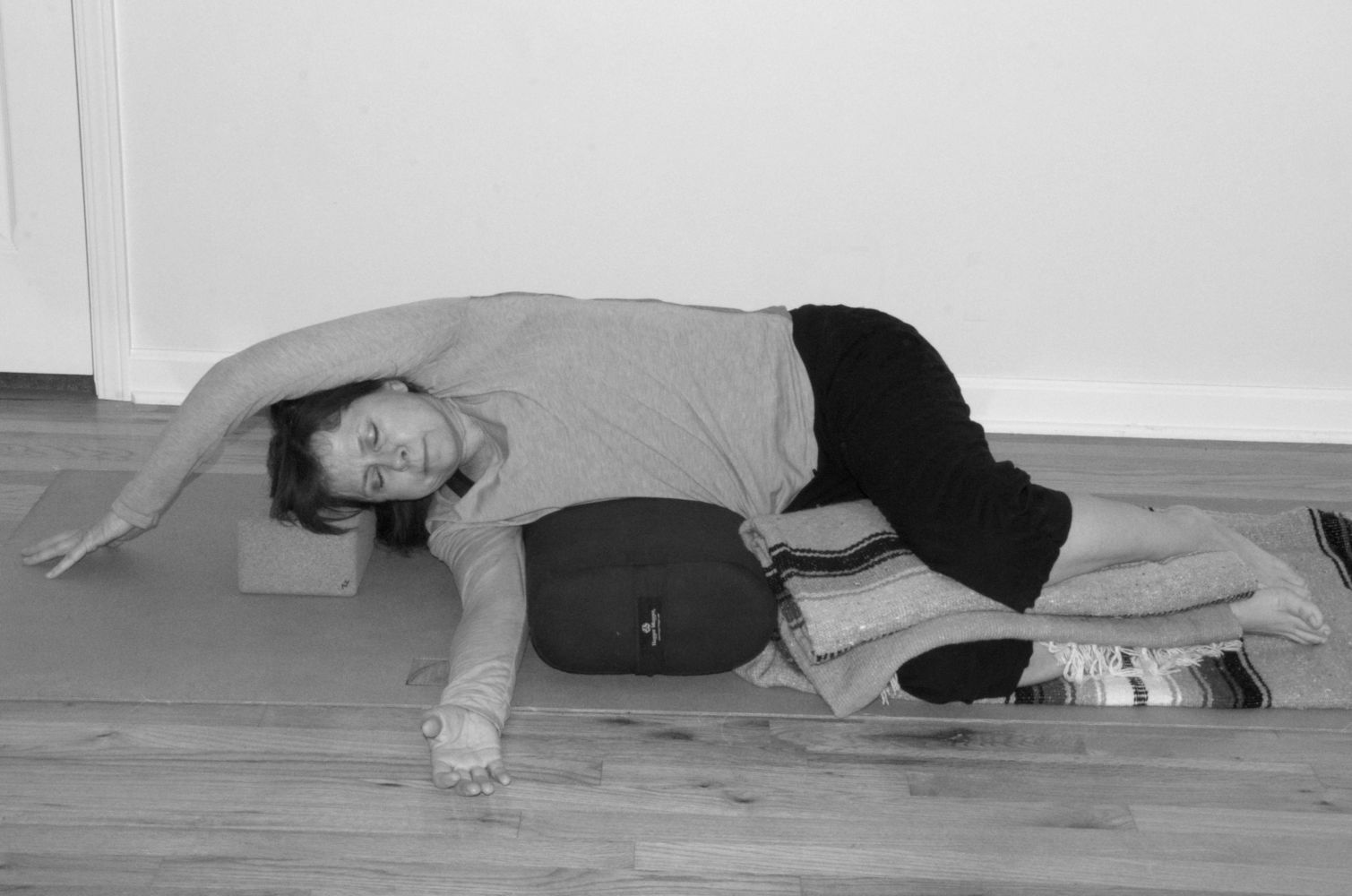
7. Reclined Half Moon Pose
Reclined half moon allows us to open up our side body, which has a tendency to be constricted and tight. This posture allows the muscles in between the ribs (intercostal muscles) to gently stretch, keeping them soft and spacious and giving more freedom to the lungs as we breathe. Bringing the arm above the head supports lymphatic draining, which helps keep our body clear of toxins. And because there is also a gentle side bend, this posture creates length and ultimately promotes spine health. Finally, all of the muscles and fascia on the side body have an opportunity to be stressed and stretched, creating circulation and energy flow.
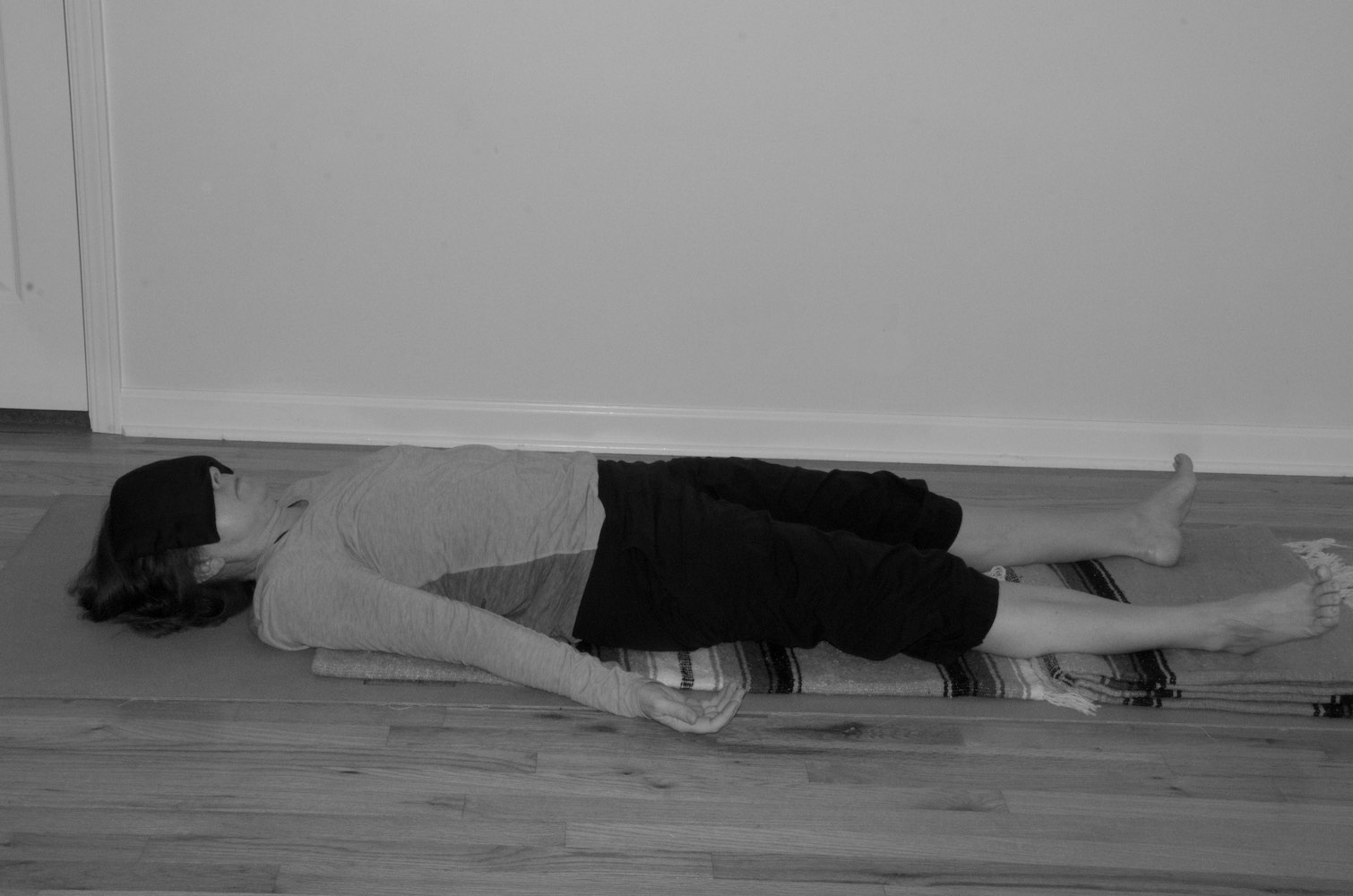
8. Shoulder-Blade Inversion
A gentle, shoulder-blade inversion can be just what is needed to release stress from the upper back, plus open the heart and lungs. Placing the edge of a blanket (or more blankets depending on personal preference) directly under the center of the shoulder blades creates gentle pressure, allowing the blades to release. This upper part of the back has quite a few nervous system responders, and stimulating the shoulder blade area allows the nervous system to settle down once tension is released. This posture also gently opens the shoulders, heart, and lungs, creating spaciousness and expansiveness in the upper torso.
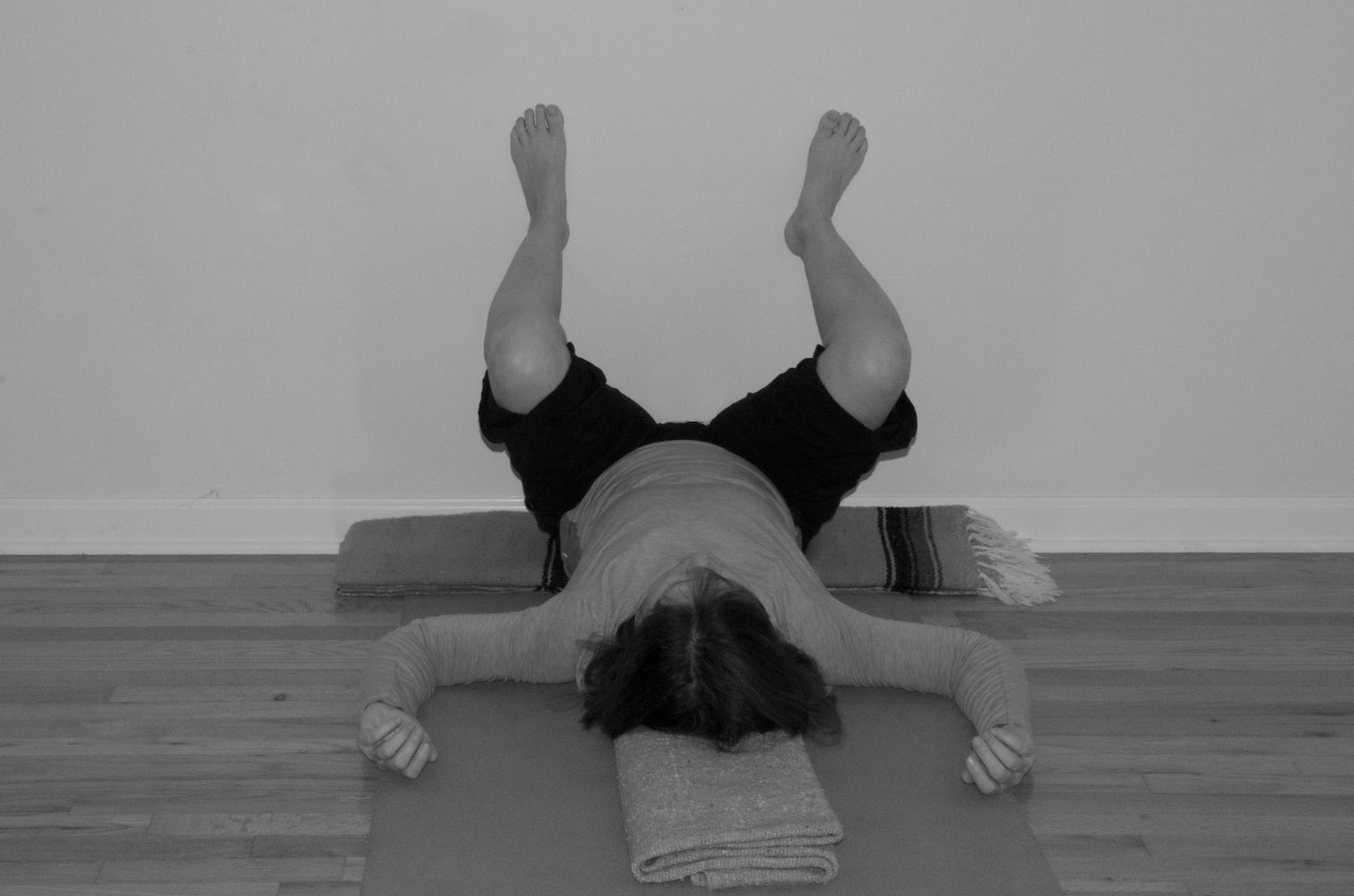
9. Malasana
Malasana, or squat, can be challenging in its traditional expression. When we move the pose to a wall, however, it opens up a lot of possibilities because we don’t have to balance ourselves if we are struggling, or worry about putting stress on the knees. Doing this at the wall gives us the freedom to move as close or away from the wall as our hips require. It also allows us to experiment with different variations with the feet, as well as explore the space between the feet to open the hips. Because we have support, most people will likely be able to stay at the wall for a much longer period of time, in a more passive state, as the muscular energy required is so much less than in a traditional squat. Opening the hips is also helpful for increasing digestion, which allows the nervous system to not have to work as hard.
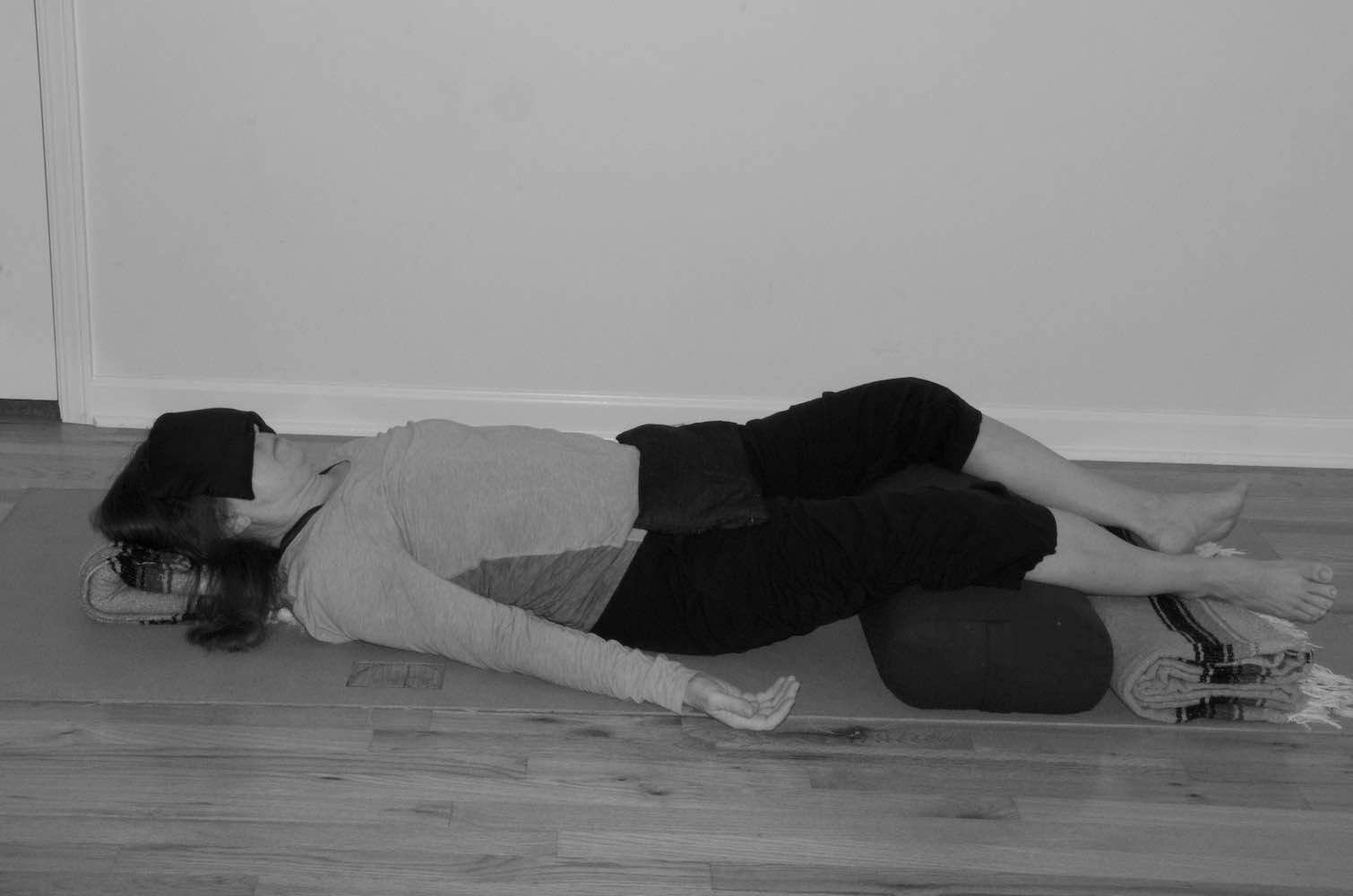
10. Savasana
Savasana, or corpse pose, is a posture that is typically done at the end of any yoga practice. This posture allows us to receive the benefits and residual effects of the practice. While in stillness, our brains and bodies have a moment to comprehend the practice and postures we just experienced, while energy begins to flow freely and hydration gets absorbed into the tissues, creating life and vitality. One can also incorporate short pauses, or “mini” savasanas, throughout the practice to access the felt sense that becomes heightened when we move and stretch the tissues.

11. Facedown Savasana
Facedown savasana is an alternative to final rest or corpse pose. This posture, while having many of the benefits of traditional, face-up savasana, allows a different perspective. Finishing in a prone position changes the experience and the relationship with the breath, as it moves to the back body instead of the belly, creating space around the kidneys. This version of savasana can also create a sense of stability and safety for some who feel more vulnerable while face up. Finally, by having the face in a downward position, our awareness can move inward a little easier, as there are less distractions. Adding a sand bag to the low back, or covering with a blanket, can also create a deeper sense of groundedness.

